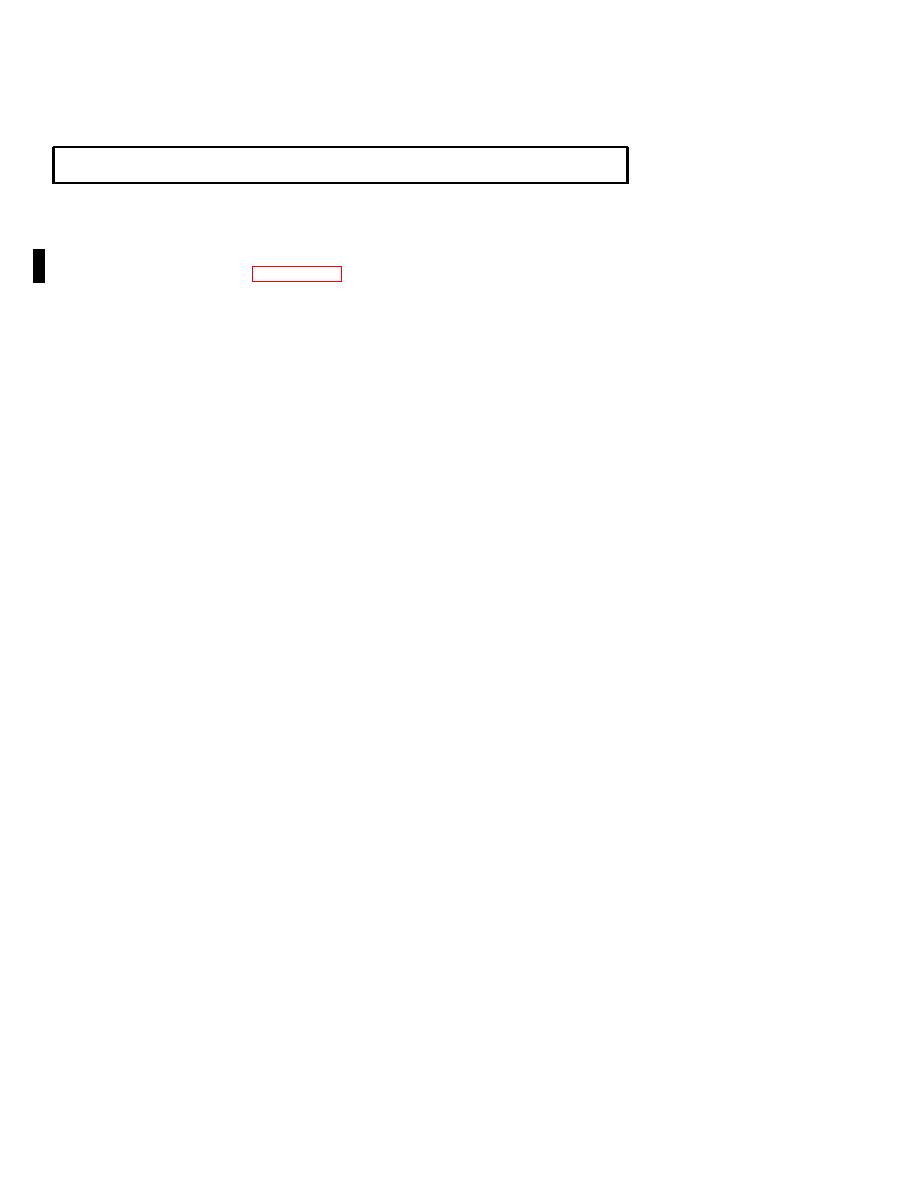 |
|||
|
|
|||
|
Page Title:
GENERAL MAINTENANCE INSTRUCTIONS-continued |
|
||
| ||||||||||
|
|
 TM 9-2815-224-34&P
Engine Maintenance
2-5. GENERAL MAINTENANCE INSTRUCTIONS (CONT).
(5)
Handle and store removed engine components carefully.
(6)
Inspect parts as removed for breaks, dents, cracks, surface defects or other obvious damage. Turn in
bad parts. Set aside good parts for later use.
(6.1)
When fastener tightening requirements are not given in maintenance task, tighten screws and nuts
in accordance with Appendix E, TORQUE LIMITS.
(7)
Replace all gaskets, packings, and seals removed during repair work. Replace all lockwires,
lockwashers, cotter pins, etc., at time of reassembly.
(8)
Remove burrs from gear teeth with a fine-cut file.
(9)
Remove residue from bearing races with crocus cloth.
(10)
Welding and brazing processes may be used to repair cracks in external steel parts, such as brackets,
panels, and light framework. Because of time required and the chance of subsequent failure, such
repairs should be attempted only when replacement parts are not available. Welding and brazing of
castings and running parts or parts under great stress will only be done in emergencies.
(11)
When installing studs in engine block use a proper driver. A worn stud driver may damage the end
thread. Then a chasing die must be used before a nut can be screwed on. This procedure will
remove cadmium plating and allow corrosion. Before installing a stud, inspect hole for chips. Blow
out foreign matter, and start stud by hand. Before final insertion, coat thread with a film of
antiseize compound. Install stud to proper "setting height", which is the total projection length.
(12)
Replace all broken, worn, or burned electrical wiring. Wires with broken strands must be replaced.
(13)
Replace all broken, frayed, crimped, or soft flexible hoses. Replace stripped or damaged fittings.
Replace entire flexible hose if fittings are damaged. Hose clamp should not crimp hoses.
(14)
Replace any screw, nut, or fitting with damaged threads. Inspect tapped holes for thread damage.
If cross-threading is evident retap the hole for the next oversize screw or stud. If retapping will
weaken the part, or if the cost of the part makes retapping impractical, replace the part. Chasing
the threads with proper size tap or die may be adequate.
(15)
Reshape elongated mounting holes to round and drill to receive bushing with required inner
diameter. Stake bushing in place with center punch.
(16)
Remove protective grease coatings from new parts before installation.
(17)
To replace a preformed packing, first clean groove, then stretch packing,and place into position.
Place component on flat surface and uniformly press packing into position.
(18)
Use nonhardening pipe-joint compound or Teflon tape to join piping.
(19)
Coat both sides of gasket with sealant. Remove all traces of previous gasket and sealant before
installing new gasket.
(20)
Coat oil seals evenly with oil or grease before installing. Install oil seals with seal lip facing in,
applying an even force to outer edge of seal. If oil seals are to be installed over keyed or splined
shafts, use a guide to prevent sharp edge of the keyway of splines from cutting the leather or
neoprene seal. Construct guides of very thin gage sheet metal and shape to the required diameter.
Make certain guide edges are not sharp and are bent slightly inward so they do not cut the seal.
(21)
When mounting bearings on shafts always apply force to the inner races. When mounting bearings
into housing always apply the force to the outer race.
(22)
Lubricate all preformed packings with a thin coat of light mineral oil before installation.
(23)
Lubricate bearings before assembly with lubricant used in the related housing or container to
provide the first run-in until lubricant from the system can reach the bearings.
(24)
To ease assembly and installation, tag and mark shims, connectors, wires, and mating ends of lines
before disconnecting them. Identify similar parts to ensure correct assembly.
(25)
Use a chain hoist, jack, or other aid when lifting the heavier components.
Change 4
|
|
Privacy Statement - Press Release - Copyright Information. - Contact Us |